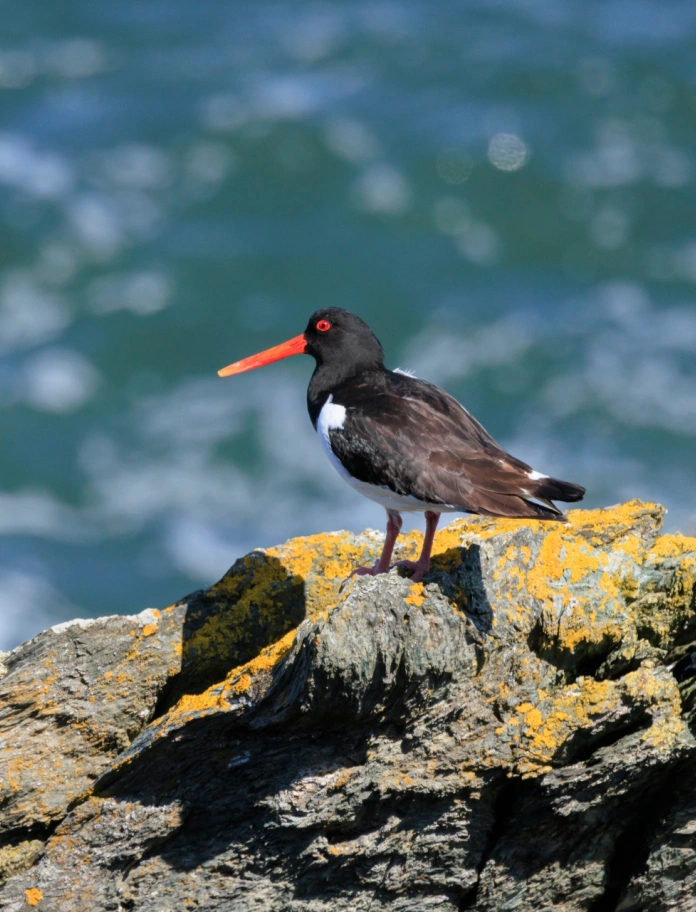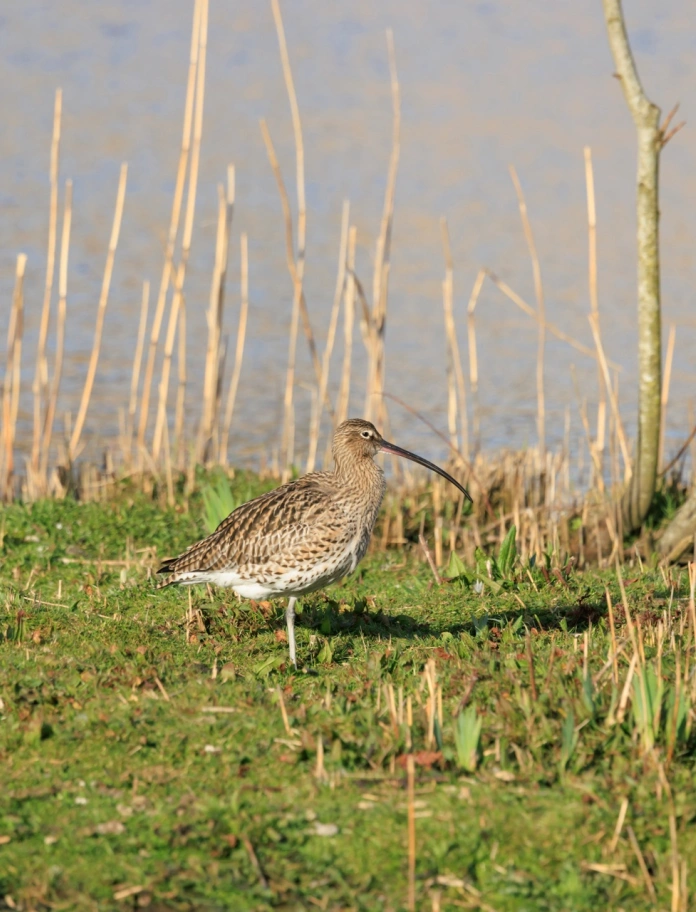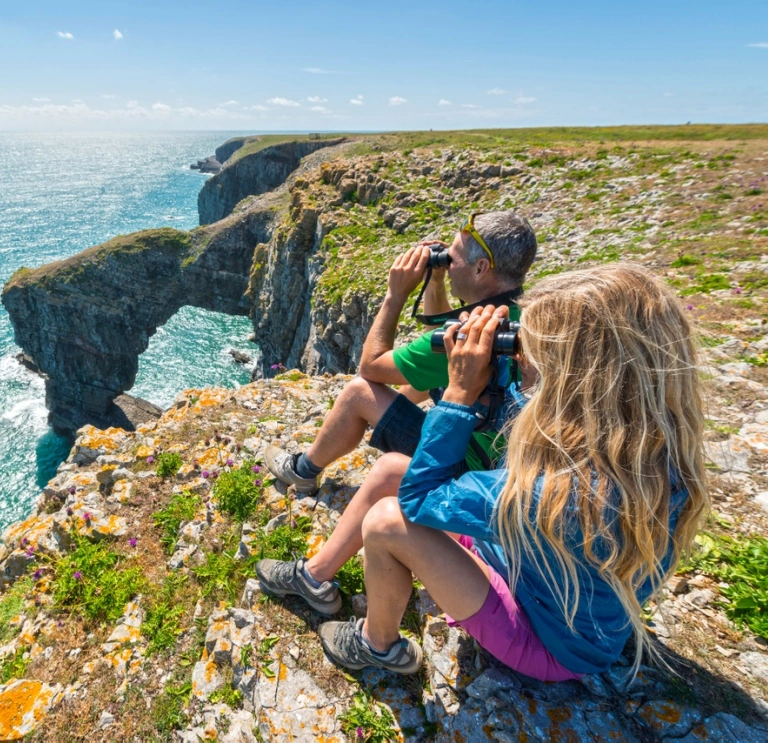Oystercatcher
Despite the name, this black and white wading bird mainly eats cockles and mussels. Called pioden y mor in Welsh, you’ll find them all over our coast throughout the year, probing rockpools, beaches and tidal estuaries for their prey. Their loud ‘peep-ing’ call has an urgent, almost panicky tone that you’ll often hear long before the birds come into view. You can get a good look at them at Whiteford National Nature Reserve on the Gower Peninsula, where you can observe the resident oystercatchers from a number of handy hides.
Listen to the oystercatcher call, or find out more about oystercatchers.

Curlew
Known as gylfinir in Welsh, this wading bird’s long curved beak is as distinctive as its call – an eerie ‘cur-lee’ that is thought to be the origin of its name. Though they are uniquely suited to wetland and coastal areas, you’ll see these long-legged waders all over Wales in habitats including farmland, moors and grassy fields. You’re most likely to run into them at the seaside between July and January, when they winter in large numbers around almost the entire Welsh coastline.

Chough
Britain’s rarest member of the crow family is found exclusively in western parts of the UK. Pronounced ‘chuff’ and known as bran goesgoch in Welsh, there are only around 500 pairs nesting in the whole of the British Isles. You’ll find many of this small population on our coastline, at places like Ramsey Island in Pembrokeshire and South Stack Cliffs on the Isle of Anglesey. With jet-black plumage and bright red feet and beak, its characterful yelps are usually delivered as it tumbles along the cliff edges appearing out of nowhere and disappearing just as quickly.
Kittiwake
Named for its unmistakeable call and known as gwylan goesddu in Welsh, this ocean-going gull has serious sea legs. It spends much of the winter out in the Atlantic, only returning to dry land to breed in spring and summer. When they do come ashore, they nest precariously on sheer cliffs on the coast in their thousands, with the largest numbers to be found on the rocky coasts of Anglesey and Pembrokeshire.
Listen to the kittiwake call, or find out more about kittiwakes.

Raven
While it’s not a seabird in the traditional sense, you’ll still encounter plenty of ravens on any trip along the Wales Coast Path. Called cigfran in Welsh, these big, jet-black birds have a loud, guttural croak and nest in large numbers along our coastline, both on cliffsides and in the trees. You’ll find the world’s largest raven roost at Newborough on Anglesey, where up to 2,000 of these birds rest overnight in the pine forest lying next to the beach.





